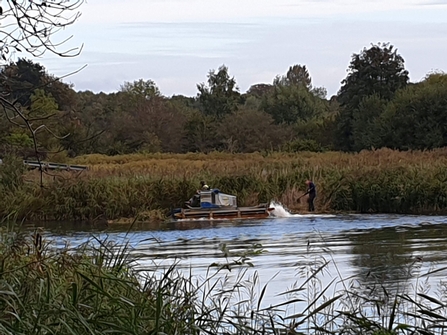Last year, The State of Nature report told us that nearly one in six species are at risk of being lost from Great Britain. The figure is sadly much higher for some groups – take birds, for instance, with 43% at risk. Whether we are nature lovers or not, we are all living in nothing short of a biodiversity emergency and climate crisis. That’s why active conservation management is vital in helping wildlife recover, enabling nature to adapt to climate change and pivotal in creating more prosperous communities.
At the Trust, we work 365 days a year to support nature’s recovery and our Reserves team are at the forefront of that. Here, Dan Townsend, Senior Reserves Officer, provides a first-hand account of what it takes to manage the reedbed at Amwell Nature Reserve – an internationally important wildlife site.
Amwell Nature Reserve is a Site of Special Scientific Interest (SSSI), which sits within the Lee Valley and forms part of the Special Protection Area (SPA) – a strictly protected site for rare and vulnerable birds and for regularly occurring migratory species, and Ramsar site – a wetland considered to be of international significance. It is a nationally important site for wintering birds including Bitterns – a member of the heron family that was on the brink of extinction in the UK in the 1990s. Currently Bitterns use this reserve to overwinter however there have been hopes that this will become a breeding site for them, which could come soon. A Bittern was heard booming for the first time at Amwell in March this year - the call a Bittern makes when attempting to attract a mate.




